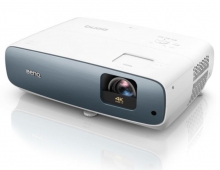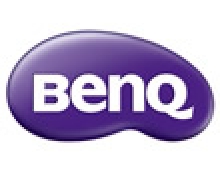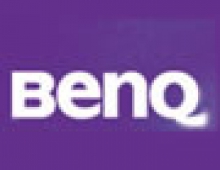BenQ DW1620 (vB7P9)
13. QScan Utility
Review Pages
2. DVD Recording Tests
3. Supported Media List for Fw B7P9
4. CDSpeed/PlexTools Scans - Page 1
5. CDSpeed/PlexTools Scans - Page 2
6. CDSpeed/PlexTools Scans - Page 3
7. CDSpeed/PlexTools Scans - Page 4
8. CDSpeed/PlexTools Scans - Page 5
9. CDSpeed/PlexTools Scans - Page 6
10. CDSpeed/PlexTools Scans - Page 7
11. DVD+R DL- Page 1
12. DVD+R DL- Page 2
13. QScan Utility
14. Conclusion
BenQ DW1620 - Page 13
QScan Utility
What is TE and FE?
TE (Tracking Error) shows how well the drive follows the predefined track on the disc. FE (Focus Error) shows how well the drive is able to focus the laser on the disc. When the laser beam cannot focus horizontally and vertically, TE and FE will occur and can be recorded. That means, lower and smoother TE and FE error level indicates laser beam can focus more precisely on disc tracks.
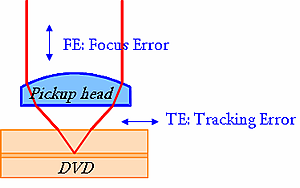
Importance of TE and FE
1. A good quality disc will have clear track so a drive can write data on
it more easily. And a correctly focused laser will make a correctly
defined pit. Therefore, low TE/FE error level can maximize the
writing strategy performance of the drive.
2. When burning at low speed, drive servo usually has the ability to compensate small TE/FE variance of the disc. But when burning speed increases, TE/FE plays important role to help us identify if the disc can successfully burn under desired speed. Imagine when you drive at high speed, the smooth level of the road will decide if this is going to be a bumpy ride.
3. Here we have 3 graphs to demonstrate TE and FE using BenQ's QScan (detail description of QScan will be covered in Part 2). X-axis describes disc track location and Y-axis marks TE and FE error level. Criteria are set as: TE 500 and FE 450. They are relative values rather than absolute ones. When the measured TE or FE value goes beyond defined criteria at some disc location once, QScan will determine the disc as "not recommended" for burning under selected speed, because disc will likely to encounter write fail or read fail at that address.
4. Based on our previous description, a disc that makes writing strategy deployed well should have (1) TE/FE measurement beneath criteria and (2) stable line shape. For example, disc of Graph-1 meets both requirements. Usually this kind of discs will be qualified as "good" or A-grade discs.
5. It's worth noted that even a disc that has TE/FE beneath criteria like Graph-2, if the drawing line is quite "bumpy" (i.e. TE/FE has big variance), it's not good for writing strategy either.
6. The disc shown in Graph-3, which neither meets requirement (1) nor (2), will almost encounter high PI or POP.
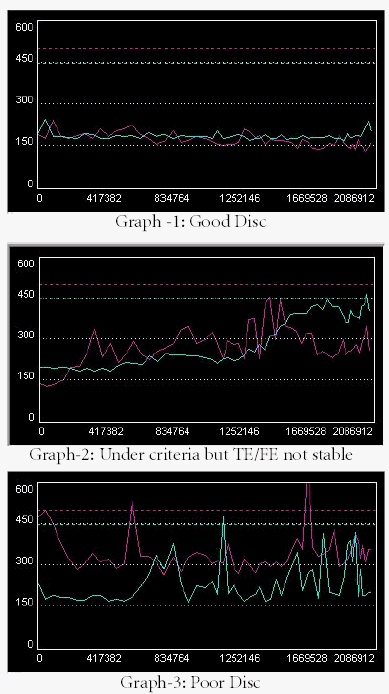
Below are the results of scans of two media, both from Mitsubishi Chemicals, at two different speeds for each media.
- Mitsubishi Chemicals 16X DVD+R scaned for 16X
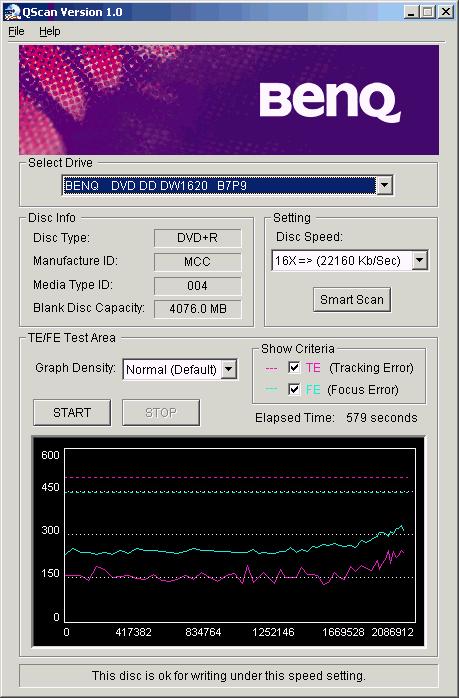
- Mitsubishi Chemicals 16X DVD+R scaned for 4X
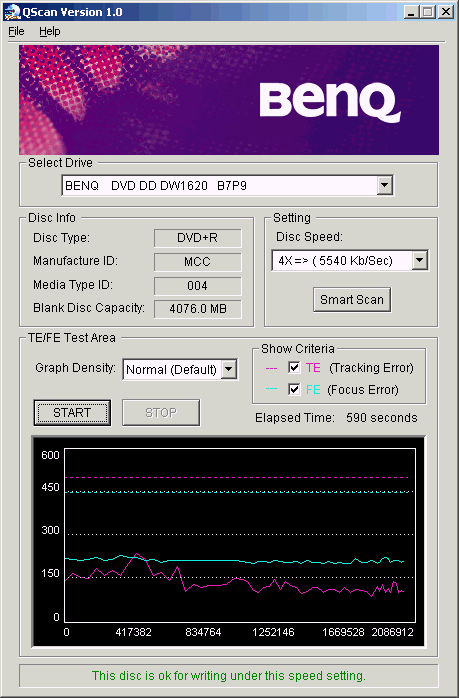
- Mitsubishi Chemicals 4X DVD+R DL scanned for 4X
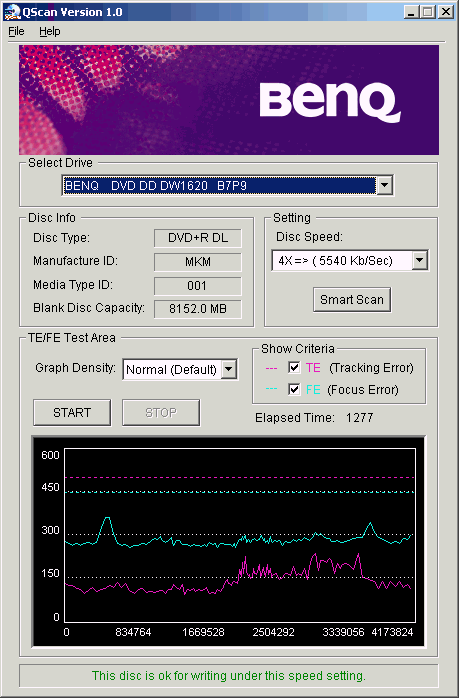
- Mitsubishi Chemicals 4X DVD+R DL scanned for 2.4X

According to the results, both discs burn acceptably at the selected speeds.
Review Pages
2. DVD Recording Tests
3. Supported Media List for Fw B7P9
4. CDSpeed/PlexTools Scans - Page 1
5. CDSpeed/PlexTools Scans - Page 2
6. CDSpeed/PlexTools Scans - Page 3
7. CDSpeed/PlexTools Scans - Page 4
8. CDSpeed/PlexTools Scans - Page 5
9. CDSpeed/PlexTools Scans - Page 6
10. CDSpeed/PlexTools Scans - Page 7
11. DVD+R DL- Page 1
12. DVD+R DL- Page 2
13. QScan Utility
14. Conclusion

